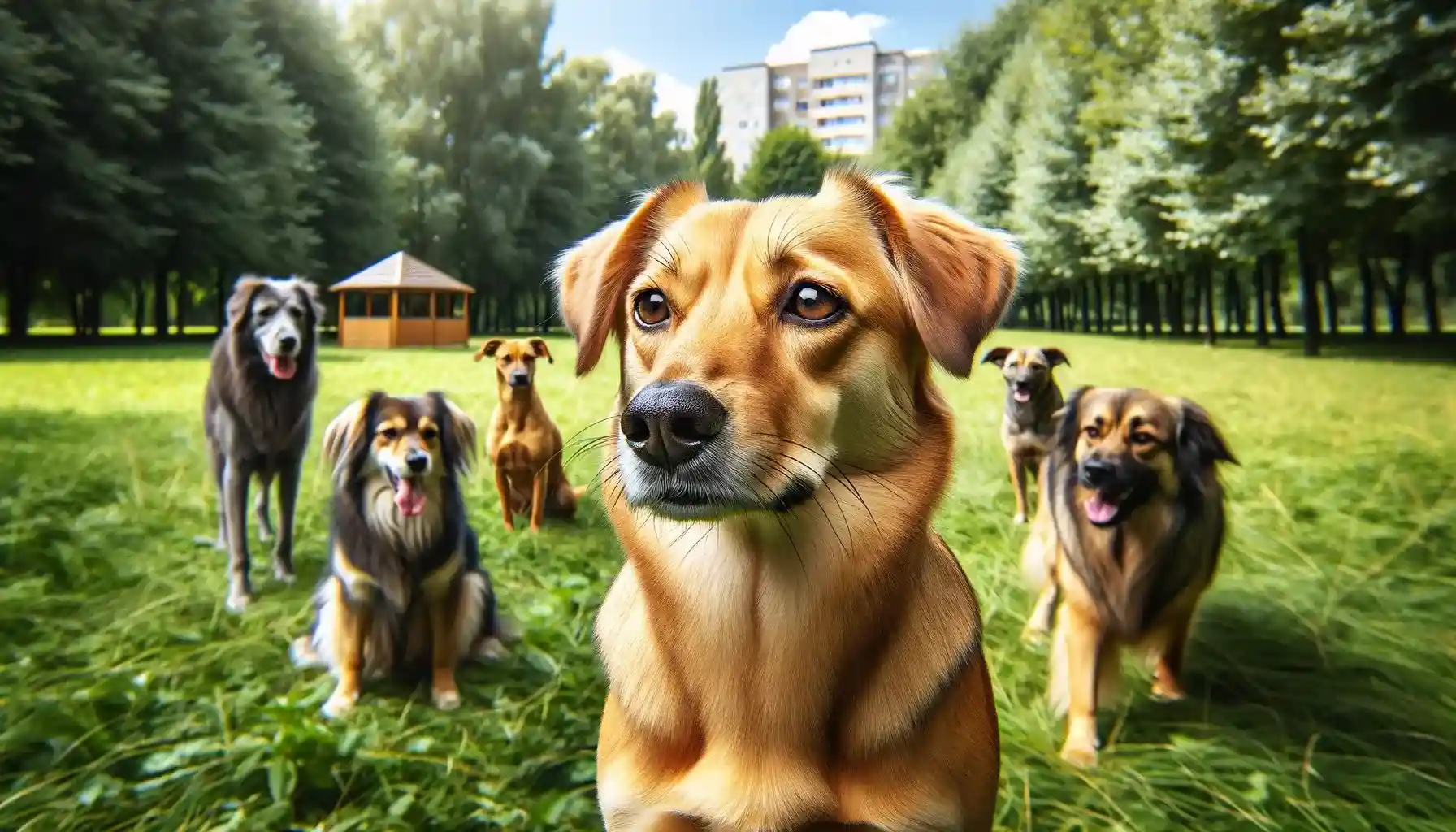
Breaking Bad Habits: Behavior Modification Dog Training
Introduction
Training a dog can be a rewarding experience, but it’s not always easy. Some dogs may develop bad habits that can be challenging to break. Whether it’s excessive barking, destructive chewing, or aggressive behavior, these issues can put a strain on the relationship between a dog and their owner. However, with the right approach, these behaviors can be modified through behavior modification dog training. In this blog post, we will explore the concept of behavior modification and how it can help retrain your furry friend for a happier and healthier relationship.
Understanding the Root Cause of Behavior Problems
Behavioral challenges in our canine companions can be traced back to a myriad of origins. Often, these troublesome tendencies are the result of past traumatic experiences, insufficient training, or the pressure that comes with adapting to unfamiliar surroundings. Digging into the underpinnings of these behavioral hiccups is the cornerstone of successful modification.
Try to put yourself in the paws of your furry friend. Imagine their confusion and stress as they try to navigate their new life, often without understanding why their previous situation changed. It’s here that compassion and patience play a critical role. Keep in mind that these unsavory behaviors are not indicative of a ‘bad’ dog, but rather are the after-effects of unfortunate past experiences or inadequate training.
As you navigate the journey of rehoming a dog with behavioral problems, it’s pivotal to refrain from judging them for these issues. Instead, focus on understanding the roots and then providing them with the love, consistency, and training they need to move beyond them. Remember, you’re not dealing with a disobedient or stubborn creature, but a living being who’s trying to adapt to a whole new world, and that’s no small task. Your understanding and empathy can truly make a world of difference in this process.
Recognizing Common Behavior Problems
Unmasking behavior problems is the initial step in modifying your dog’s actions. Some prevalent issues in dogs include aggression, destructive behavior, persistent barking, and separation anxiety. Each of these problems exhibits unique signs that, when recognized, can help you address the issue more effectively. An aggressive dog might show signs like growling, biting, or snapping, which are clear indicators of discomfort or fear. On the other hand, a dog suffering from separation anxiety may demonstrate destructive behavior when left alone. Recognizing these patterns is pivotal to creating an effective plan for behavior modification. It’s like piecing together a puzzle; once you know what you’re dealing with, you can figure out the best strategy for improvement.
The Power of Behavior Modification Dog Training
Envision behavior modification training as a bright and promising tool in your dog rehoming toolkit. This technique hinges on the principle of positive reinforcement, a rewarding system that boosts the odds of your dog reenacting the good behavior. Say, for instance, your newly adopted furry friend remains poised when a guest steps into your home, reward their calm demeanor with a treat or verbal praise.
This training approach goes beyond merely correcting behavior—it fosters a nurturing bond between you and your pet. It’s a game-changer that shifts the focus from penalizing the “wrong” behavior to celebrating and rewarding the “right” one. This way, your dog will associate good behavior with positive outcomes, encouraging them to repeat these actions in the future.
Think of this as a dynamic dance of learning, where each step forward is met with a positive response. It’s a process that requires patience, but the payoff is immeasurable—a well-behaved dog and a strong bond rooted in understanding and respect. After all, behavior modification training isn’t merely about managing your dog’s actions; it’s about enhancing your relationship with your new family member. Remember, a dog that feels understood and rewarded is more likely to reciprocate with love and obedience.
Integrating a New Routine in Your Dog’s Life
Let’s think of your furry friend’s life as a beautiful symphony. Now, the key to creating harmony in this symphony lies in the rhythm, the routine you set for your dog. This routine becomes the beat that helps your dog groove into their new life, reducing anxiety, and promoting predictability. It’s about defining the high and low notes of their day—the times for meals, walks, play, and rest.
Imagine the sense of security your dog will feel when they know that their bowl will be filled at the same time every day or that playtime follows right after breakfast. Having a routine adds a layer of predictability to their otherwise chaotic new world. This structure allows your dog to anticipate what’s coming next, effectively reducing any stress or anxiety they may feel.
But what should this routine look like? Well, it’s important to have a balanced mix of activities in the schedule. Regular feeding times form the backbone of the routine. Alongside this, plan consistent periods for physical exercise like walks or play sessions. Mental stimulation is equally important, so consider incorporating interactive games or training sessions. And, of course, don’t forget to carve out time for relaxation and sleep.
In the midst of all these activities, it’s vital to ensure that the routine mirrors your dog’s natural rhythms and meets their specific needs. For instance, puppies might need more frequent feeding and nap times, while adult dogs may require more physical exercise. The goal is to establish a routine that suits your dog’s age, breed, and temperament.
By setting a routine, you’re creating a familiar rhythm in your dog’s life—a rhythm that they can dance to with confidence and joy. With time, this routine will help them adjust to their new home, creating a beautiful symphony of trust, love, and companionship between you and your furry friend.
Providing a Safe and Comfortable Environment
When rehoming a dog with behavior issues, it’s imperative to create an environment that shouts ‘Welcome Home!’. Your furry friend should feel safe and comfy in their new abode, a haven where they can relax and be themselves. Start by designating a quiet corner for your dog, a cozy retreat they can scamper off to when the world becomes a tad overwhelming. This personal space, equipped with a comfortable bed and their favorite toys, can be their sanctuary amidst the hustle and bustle of their new life.
Additionally, your house should be free from hazards that could potentially harm your four-legged buddy. Keep items like cleaning products, medications, and certain plants out of paws’ reach. Also, remember that the introduction to the house and yard should be gradual. Too much too soon can be a sensory overload for your pooch.
Last but not least, ensure all family members are on the same page. Everyone should understand and respect the dog’s boundaries. This unified approach will foster a sense of security and belonging in your dog, nudging them a step closer towards becoming a cherished member of your family.
Remember, a secure and comfortable environment doesn’t just cater to your dog’s physical needs, but also to their emotional well-being. It’s about giving them a home where they feel loved, safe, and, most importantly, understood. After all, nothing spells ‘comfort’ better than a home that’s in tune with your needs, right? So, roll out the red carpet and welcome your new companion to a home that’s more than just four walls and a roof—it’s a safe haven crafted with love and understanding.
Seeking Professional Help if Needed
Just like you’d visit a doctor for a physical ailment, sometimes, your canine companion might need professional guidance to overcome behavioral issues. No matter how committed and patient you are, certain problems might prove challenging to handle. Here’s where professional dog trainers or behaviorists step in. Armed with specialized knowledge and experience, they can help untangle intricate behavior problems. Perhaps the issue is deeper than you initially thought, or maybe your furry friend needs a different training approach. Whatever the situation, don’t hesitate to call for reinforcements when necessary. Remember, asking for help is not a sign of defeat, but rather a mark of your dedication to providing the best for your furry friend. Seeking professional help can provide valuable insights and tailored strategies to navigate this challenging terrain. Keep in mind, the ultimate goal is your dog’s happiness and well-being, and sometimes, it takes a village to raise a well-behaved dog.
The Role of Patience and Persistence in Rehoming Dogs
The process of rehoming a dog with behavior problems can be likened to a marathon, not a sprint. It’s a journey requiring two vital companions—patience and persistence. Understandably, adapting to a new home is a colossal task for your canine friend, and grasping this new life with its unique rhythm and rules might take time. There might be moments of frustration, times when progress seems invisible. Yet, it’s during these challenging times that you need to stay the course and persist.
Consider each setback as an opportunity for learning, a chance to reassess and adapt your strategies. Remember, it’s okay if the path to success isn’t straight; it’s the forward movement that counts. Persist, keep your eyes on the goal, and rest assured that every small step in the right direction brings your furry friend closer to feeling comfortable in their new home.
On this journey, patience is your faithful ally. Dogs, like humans, have unique personalities and learning curves. So, it’s natural that your canine companion may need more time to understand and adopt new behaviors. Embrace this time with understanding, remembering that the transformation you’re seeking is profound and worthwhile.
Your role is akin to a lighthouse, offering guidance and reassurance during this crucial transition. Shower them with love, give them the gift of time, and let patience guide you. Your rewards won’t be instantaneous, but when they arrive in the form of a well-adjusted and happy dog, they’ll be immeasurable. Your steadfast patience and persistence will be the beacon that guides your furry friend to a life filled with confidence, trust, and companionship.





